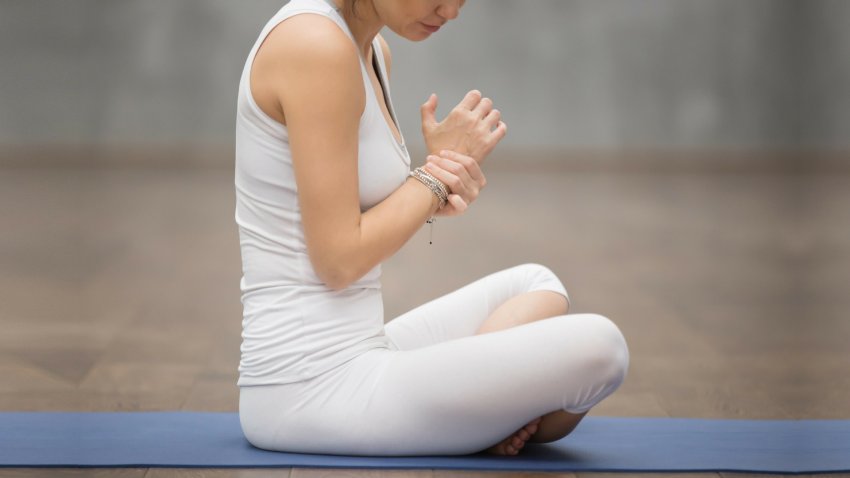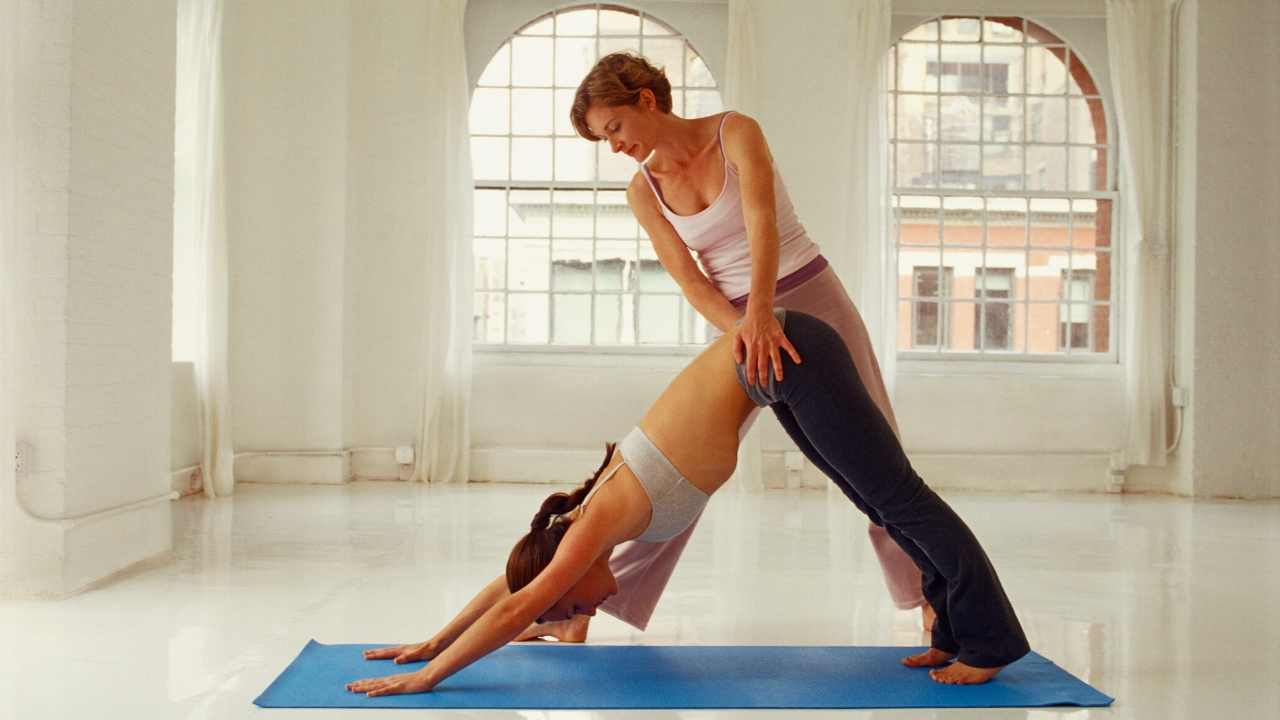
Yoga philosophy is founded upon meditation, asana and joy. These practices are intended to condition the aspirant's physical body. If the asanas can be held for a prolonged period, they are considered mastery. There are three types of asanas: Advanced, Intermediate, and Primary. To be successful in each asana, you need to have a certain level of mental concentration. The primary goal is to stabilize the breath and detach from any unnecessary distractions.
Yoga can be broken into several stages. The five first stages use external aids. The final three stages are mental aids. Dharana is an ability to be aware of the externals continuously for a longer period of times. Dhyana refers to the continuous contemplation of the object without the ego. The goal of all yoga practices is to achieve samadhi, or total self-collectedness. Meditation can help you reach this state by connecting to your cosmic intelligence.
Yoga's intellectual content is based on the principles of Samkhya (the Hindu school of philosophy). It assumes that there is a Supreme One. The aspirant is able to achieve total spiritual freedom. The aspirant must be able to see beyond illusions, ignorance, and matter. Otherwise, they will only fall. The aspirant tries to reverse the world's order and attain purity by dephenomenalization.

For Westerners, it can be hard to grasp the core principles behind yoga philosophy. These core concepts are useful in reorienting our minds and allowing us to experience the interconnectedness between all things. Yoga practice can include many aspects such as the chakras (nadis), and a spiritual "chi" (sensuality). Hatha yoga, which focuses on studying the energy anatomy, is a key part of yoga practice.
If you are serious about your practice of yoga, it is important to understand the philosophy behind yoga. It focuses on preparing the mind and body to engage in a yoga practice. Yoga Sutras, which focus on ethical preparations as well as ethical considerations, are found in the first two stages. These are the yama and the niyama stages in the yoga process. The niyama stages focus on discipline and abstinence, while the niyama stages focus on the mind.
The aphorisms of the Yoga Sutra, or "Threads of Wisdom," describe the eight limbs of yoga. These aphorisms provide guidelines for a meaningful life. The Sutra discusses meditation in all its aspects, as well as the eight limbs. It emphasizes mindfulness and meditation. It allows people to realize their full potential. Living a yogic lifestyle is a wonderful way to avoid suffering.
Yoga philosophy emphasizes more than just asanas. It also stresses the importance and benefits of moksha. In yoga practice, the aphorisms play a significant role. The yoga practice includes the asanas. The asanas may help practitioners attain moksha. It is also important that you understand the philosophical roots and meaning of the practice. It is a good place to start: the yogic texts. Yoga should be a serious pursuit if you wish to practice it.

Self-realization has been a central concept of yoga philosophy. This can be achieved through the practice the "Yoga-sutras", also known to as the Yoga Sutras. There are many principles and practices in the sutras that will help you to realize your true self. Yoga-sutras, in addition to the asanas and other texts of yoga, are the most important texts. The Asanas require that the practitioner concentrate on the breath while performing the Asanas.
The ultimate goal for yoga is the continual experience of pure awareness, also known under Samadhi/Moksha. The yoga practitioner will experience the realization of his or her "true self". All mental constructs of mind and body are eliminated and everything is present now. The yoga philosophy can help you achieve this enlightened state. This is an integral part of the practice.
While yoga asanas have many benefits, they are necessary for practice. These practices not only help you relax but also improve your energy and health. They improve the immune system which is an important part of the human body. So, it is important to learn about yoga philosophy and its benefits before performing asanas. The Yoga Sutras and Patanjali Course is offered by EkhartYoga Academy.
FAQ
What is butter good for?
Butter is one source of saturated fats. This type of fat helps to build stronger bones, healthy skin, and hair.
Butter also contains vitamin K, which prevents bleeding from cuts and bruises. Vitamin K works with vitamin A to prevent bleeding.
Butter is also rich in minerals, including calcium, phosphorous, and potassium. These elements help to build stronger bones and teeth.
Butter has its limitations. Butter is high in cholesterol. A few studies have shown that too much cholesterol can increase the risk of developing coronary disease.
Butter is also high in saturated fat which can lead to obesity and higher cholesterol.
However, if you must have butter, try spreading it on bread rather than dipping it into soup or salad. Bread absorbs more oil than potatoes or pasta.
How To Lose Belly Fat Fast
There are many ways to quickly reduce belly fat. One option is to eat less calories and drink more water.
You can also increase your metabolism through activities like running or swimming.
If you want to remove belly fat quickly, you should also avoid sitting down for too long. Instead, get up and move around throughout the day. This will allow you to burn more calories.
If you've tried all the methods and are still struggling with belly fat, there's another option.
A belt is a device that allows you to do this. When you sit down, the belt tightens around your waist.
As a result you'll feel uncomfortable and will be more mobile. This causes you to burn more calories, and your belly fat will decrease.
How many calories should you consume each day?
It varies from one person to another. An average person needs 2000-2500 calories per day. Based on your age, gender, height and activity level, you will need to calculate how many calories you require.
Statistics
- An estimated calorie range for moderately active adult males falls between 2,200 to 2,800 calories per day, depending on age. (eatright.org)
- 10 pounds in a month is likely during a lean bulking phase, especially for beginners. (muscleandstrength.com)
- Are You One of the 20% of Guys (mh.co.za)
- By John Thompson Take a whopping 38% off a set of PowerBlock Pros. (menshealth.com)
- Get free shipping and 25% off today. (healthline.com)
External Links
How To
How do I lose fat by exercising?
Exercise helps you lose calories by increasing your metabolism and oxygen intake.
If you exercise with moderate intensity, you can safely lose weight.
To burn fat while exercising, follow these tips:
-
Do cardio exercises such as walking, swimming, jogging, cycling, running, or elliptical training.
-
Three times per week, exercise for 30 minutes.
-
Strength training is a great way to lose weight.
-
Avoid intense exercise. You can build muscle without having to lose muscle tissue.
-
Keep hydrated during exercise. Water flushes out toxins, and keeps your body properly hydrated.
-
After working out, drink low-fat protein shakes. Protein shakes boost energy and repair muscle tissue.
-
Eat smaller meals throughout the day, so you don't feel hungry between meals.
-
Don't skip breakfast! Skipping breakfast can leave you feeling tired and sluggish.
-
Take care of your mental health. Stressful situations can affect your metabolism.
-
Keep a positive attitude. Studies have shown that people who are convinced they are overweight gain more weight than those who feel they look attractive.
-
Get enough sleep. You will have a harder time losing weight if you do not get enough sleep.
-
Keep active. Keep moving every hour.
-
Maintain a healthy diet. A healthy diet will help you feel fuller for longer.
-
Find relaxation methods. Your body won't release stress hormones that cause muscle tissue destruction if you have a tense mind.
A balanced diet contains all necessary nutrients for growth and development.
Instead of eating three large meals a day, eat six smaller meals every day. This allows your body to properly digest what you have eaten.
You need about 500 milligrams of calcium daily to maintain strong bones. Calcium can be found in dairy products such as yogurt, fortified soybean beverages, orange juice, cereals, bread, and cereals.
Calcium comes from leafy green vegetables, beans, tofu, nuts, seeds, and cheese.
Vitamin D is required for calcium absorption. It's found in fatty fish, egg yolk, and some fortified foods.
Vitamin E is crucial for skin health. It's found in vegetable oils, wheat germ oil, peanuts, almonds, sunflower seeds, and corn.
Zinc is essential for healthy immunity and wound healing. Zinc can be found as a mineral in oysters.
Zinc deficiency can cause fatigue and loss of appetite. It can also lead to depression and impaired immunity.
Sugar intake can lead to insulin resistance which causes blood glucose levels to rise. Insulin resistance leads directly to weight gain.
When there is a high level of free radicals, insulin resistance can develop. Free radicals are molecules with unpaired electrons that damage cell membranes and other parts of the body.
Free radicals come mainly from food additives, pesticides, herbicides, preservatives, smoking, air pollution, radiation, chemicals in cosmetics, lotions, and household cleaning supplies.
Free radical damage may lead to cancer, heart disease diabetes, arthritis, asthma and other conditions.
To prevent free radical damage, eat a healthy diet rich in antioxidants. Antioxidants protect against oxidative damage.
Vitamin C is found in citrus fruits and beta carotene is found in carrots.
Other antioxidant nutrients include selenium, copper, manganese, and zinc.
Selenium is known to protect cells from the oxidative damage that free radicals can cause. Selenium can be found in Brazil nuts and liver, kidneys, liver, kidneys, shrimp, cod, turkey and lamb as well as chicken.
Copper protects the brain, eyes, lungs, and red blood cells. Copper can be found in shellfish and poultry as well as meat and organ meats.
Manganese is essential for bone structure. Manganese is found in brown rice, spinach, bananas, prunes, raisins, oatmeal, and lentils.
Zinc is required for normal growth, reproduction and wound healing. Zn can also be found in white fish, lean cuts of meat, poultry, and eggs.